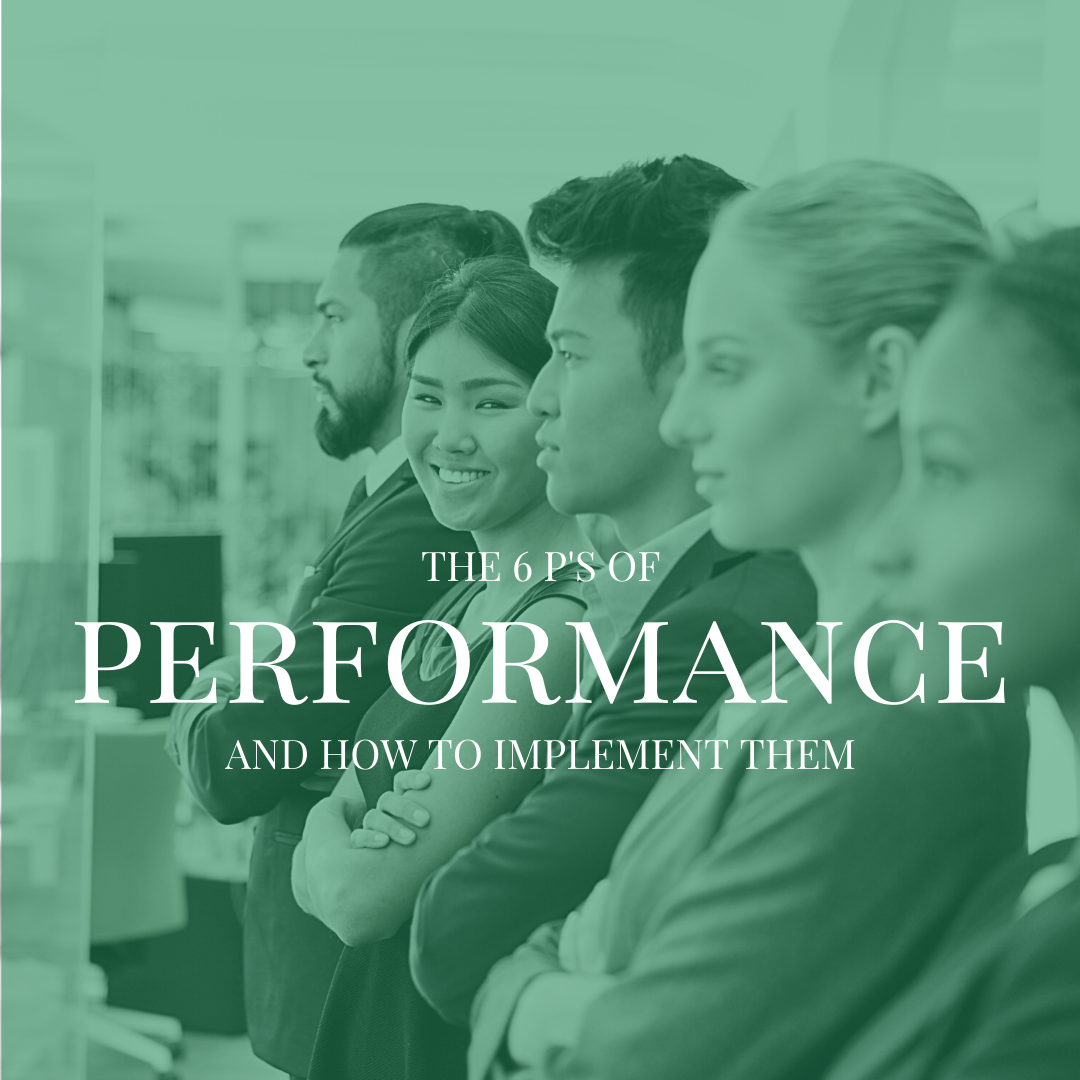‘Performance’ is a fairly hot topic under normal circumstances, but now that the world of work has been tail-ended, thanks to the global healthcare crisis, performance and its management is feeling the heat from this seismic shift.
Interestingly enough however, performance per-se has not actually been redefined; it still means the same thing - it is however, being viewed in a different light, as former observation norms have shifted significantly. The most notable difference is that many employees have been moved to mandatorily working-from-home or remote work. The monitoring emphasis has most definitely required a change to a more concentrated managerial focus towards performance outcomes primarily; and many see this as a very positive move.

To understand how to guide and manage employees’ performance outputs and results in a more effective manner, consider following the 6 P’s of Performance:
Potential
Performance is the result of input and effort - but according to renowned performance coach Tim Gallwey, “performance is equal to potential, minus interference”. What a great concept to grasp! Helping to clear away interferences or distractions for employees, allows them to focus specifically on their tasks, and reach a performance outcome more in line with their true potential. This is especially important now that many are working-from-home where it is likely the number of distractions has increased during the workday. What can managers do to help employees stay focused and engaged? Consider providing training around setting up a dedicated workspace, implementing remote workstation ergonomic assessments to make sure employees are comfortable and working healthy, training around task and time management is also helpful.
Purpose
Daniel Pink, in his world acclaimed book ‘Drive’, talks about purpose and mastery of tasks, and he explains that a proven driver of performance stems from employees understanding the purpose behind their tasks and their job role, in both the organizational and worldly sense. It is crucial that managers take the time to give feedback that outlines and shares this purpose, to help motivate employees and boost their performance outcomes. If employees understand more about how their tasks contribute to the overall success of the company, they are more likely to take greater pride in the work they do and be driven to complete it to the best of their ability.
Perspective
Like perceptions, performance has more than one perspective to consider, and these need careful management. Perspectives concerning work input, output and activities, often differ between managers and employees. Perceptions are subjective and this is why including collaborative perspectives around intentions, expectations, timelines, outcomes and results, is vital. It leads to more successful discussions, has a more positive impact on results, and enables a smoother overall management of performance
Productivity
Studies have shown how performance and its three facets: Effectiveness; Quality; and Efficiency, result in final productivity levels. Moving the dial upwards in any of these three variables, increases productivity and positivity in terms of output. Lowering the dial, has the opposite effect; and ultimately affects performance in a negative way. This conveys the clear message that managers must help boost those three moving parts to enable employee performance to be as productive as possible.
Processes/Practices
All performances are the combination of some sort of process action that produced a result..whether planned or not. To boost performance, it stands to reason that if we can identify, capture and measure the actions that lead to the highest form of productivity, then these are the ones to monitor and improve. To set employees up for success, managers need to clearly understand and help design these processes in order to set clear KPIs and goals around their future performances. If employees have a clear vision of what success looks like, they are more likely to achieve it.
Personalise
Above all, what we need to remember when it comes to employee performance, is that we are all unique. While many parts of a process can be standardized, many results also rely on the individual’s ability to adapt and perform against the backdrop of varying contexts, situations and circumstances. Therefore, the 6th ‘P’ is the culmination of this intrinsic loop..Performance must be managed through the lens of the individual Managers must personalise or tailor the performance management of employees in order to optimize their contributions and unlock their true potential in the form of successful results. Employee performance in its truest sense is not a one-size-fits-all approach and requires monitoring and adaptation to truly be effective.
If you need assistance in putting together an employee performance plan, Mackin Talent can help. See the difference a structured program can make in your employee's contribution and overall job satisfaction. Contact us today at (408) 712-9649 or by email to find out more.





